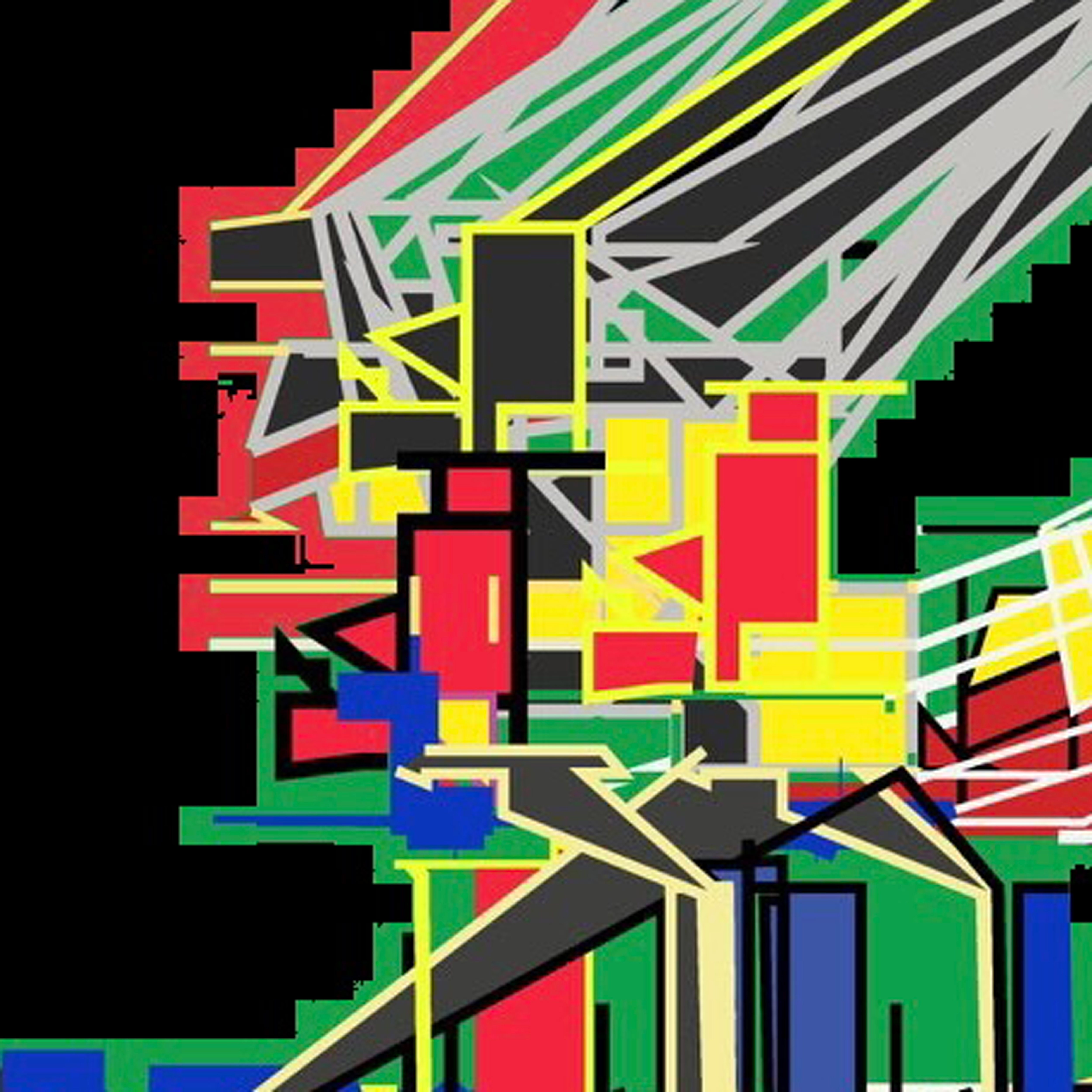About movsum

Movsum is an artist whose life orbits around lines, movement, and geometric forms. Drawing early inspiration from his natural surroundings and the captivating geometry of Wassily Kandinsky, their artistry seamlessly brings to life a hidden realm of movement and geometry through dynamic visuals in the digital world.
An interview with movsum led by Carlo Borloni


Can you share more about how your natural surroundings and Wassily Kandinsky's
work initially influenced your artistic journey?
Nature and its surroundings have always been the most important sources of inspiration for
me, especially clouds. My first work featured clouds (acrylic on paper haha). The aesthetics
of clouds and the sky have had a lasting impact on my art—their lightness, balance, subtle
beauty, and soft compositions.
It all started with dancing (hip hop). One day, for some reason, I decided to buy Kandinsky's
book without knowing anything about him. After reading his description of a point shaped like
a circle as the beginning of everything on the canvas, creating different shapes around it, the
thought stuck in my head. That night, everything changed for me. I went straight to the gym,
and my relationship with dancing began to transform completely.
For me, my body became a point depicting different forms, yet it remained the point
Kandinsky described. The canvas became the space surrounding my body and me. This is
where the name of one of my collections, "Expressive Space," comes from.
During the COVID-19 lockdown, I faced a creative crisis and didn't know how to move
forward. I wanted something more in my dance and art, which had been my passions since
childhood. As the days flew by, my frustration grew. I didn't know why I was dancing
anymore—battles became less interesting, and freestyle began to seem repetitive.
One day, I decided to explore digital art, initially thinking I wanted to become a graphic
designer (unaware of the broader field of digital art). When I started learning graphic design,
I randomly picked up lines and began playing with them. That's when I discovered what I
had been searching for all my life.
I saw dancing in my lines, the shapes of the human body, and forms found in nature, similar
to those in Kandinsky's book. I didn't fully understand it, but it spoke to me. I realized I was
creating balance and smooth flow in my compositions through my dance experience,
recalling the imperfect yet perfect balance of nature and our planet. At that point, I decided to
combine Kandinsky's philosophy of the point on the plane with my dance vision and transfer
it all to a digital canvas.
I had always danced more geometrically, but after reading the book, my vision changed
completely. When I transferred this vision to the digital canvas, I found what I had been
looking for all along.


How did your deep dives into Adobe Illustrator and Procreate shape your current
artistic style?
I first started creating digital art with Adobe Illustrator, as it was the only tool I knew very well.
After a year of practice, I delved deeply into geometry and vector art. I liked the purity of
colors and the black line. Eventually, I decided to buy an iPad on credit (haha) and got
Procreate. Initially, I set the iPad aside because I was afraid of drawing, having never drawn
anything in my life. However, after 3-4 weeks, I decided to face my fear and give it a try. I
realized that when you confront your fears, everything becomes much better and easier.
From the first day, I fell in love with Procreate. I began using the techniques I had learned in
Illustrator within Procreate, creating my compositions with even more passion.


J Dilla's music, sneaker culture, and architecture are quite diverse inspirations. How
do these elements manifest in your artwork?
Dilla's music, sneaker culture, and architecture are pretty diverse sources of inspiration. How
do these elements manifest themselves in your work?
This is a very interesting and fun question that I ask myself often haha. I think it's because I
was never really familiar with fine art until I started making digital art. My main source of
inspiration was hip hop dance culture, which included music, sneaker culture, and
architecture from traveling around cities and battles.
I believe that vision can be shaped by the things that surround you. In my case, it was the
great technique J Dilla used on the "MPC AKAI - 3000." If you're familiar with his technique,
he started to see the free mixing of sounds on a microscopic scale.
This created a disorienting rhythmic mismatch, combining both straight and swing rhythms at
the same time. The design and color combinations of sneakers, as well as the purity of lines
in architecture and their compositions, beautifully reflect the clarity of the sky and the play of
light with shadows.
These elements are some of the main aspects of my fine art.


What drew you to the Web3 space, and how has blockchain technology impacted
your work as a digital artist?
I had heard of NFTs back in 2021 but knew nothing about SuperRare, ArtBlocks, and had no
idea how an artist could build a career in Web3. It didn't work out then because gas fees
were very expensive, and I didn't understand anything about it—not even that the main
artists' hangout was on Twitter and IRL events. In 2022, I had to get a job as a graphic
designer to make money for my art and pay for gas fees, but for six months, I couldn't make
up my mind because I still didn't understand anything.
In September 2022, I was fired from my job with the criticism that I had no taste or vision
(this was a very scary moment for me) because I had a loan for an iPad that took up 40
percent of my salary. I decided to pay off the loan in October and spend the remaining
money on gas fees to prove to myself that my art could be appreciated and that my vision
would eventually become a legacy. When I was introduced to NFTs and blockchain, I started
to realize that blockchain gives digital art a real legacy, allowing it to live for centuries,
marking the beginning of a new era.
I fell in love with this space and the opportunities it provides. For the first time, I started to
take my career very seriously and responsibly. I saw how artists working on their art could
reach great heights and inspire thousands of people, whether they are artists or collectors. I
realized that this is the only place where digital art and an artist's ambitions are genuinely
appreciated and recognized.
I think I still have a lot to learn in this space, especially about blockchain, but every day I
wake up and live my dream—the life I always dreamed of. I am grateful for blockchain and
for being able to witness and be part of the birth of a great culture that is avant-garde and
will remain so for centuries to come.


Pepehaus Collection: Can you walk us through the creation of your "Pepehaus" piece
and how it blends your style with Bauhaus-inspired elements?
To create Pepe and give respect to the culture was probably one of my main desires and
goals (maybe I never said it, but it drove me). I didn't want to create it just for my style; I
wanted something big, I wanted to give respect to Pepe, to give it a meaning that will live
forever. But it took me more than a year to get there. I knew this moment would come, and I
was waiting for it.
In May 2023, I created my first Pepe and called it Shape-pe, leaning more into minimalism.
By September, I remembered my earlier work, specifically my limited edition "Inner World"
series inspired by the Bauhaus school in 2021. Inspired by this piece, I decided to expand on
it and make it more fun. After I finished, I decided to call it "Pepehaus" ("Pepe / Bauhaus")
for some reason. I shared it on Twitter and then went into the shadows to work on my next
collections and evolution.
Pepehaus often spun around in my head, but I thought that one day I would publish it on the
blockchain without giving it much importance. In 2024, after a performance that lasted six
months, I took a holiday for myself. At the start of 2024, I had a goal to dedicate my art to
respecting this space. Days went by, and I was just working and creating art as I always do.
Suddenly, Pepe himself seemed to come to me, saying it was time to respect him and the
space.
I started experimenting with a regular silhouette of Pepe. At first, I liked it, but in the morning,
I realized it wasn't what I wanted because I always strive for perfection and prioritize my
vision and concept. I opened my Pepehaus and looked at it for a long time.
Suddenly, the Bauhaus logo came to mind, representing all geometric art and the modern
world in general. The Bauhaus had a significant influence on my art and vision. That's when
the whole puzzle came together.
I realized why I created something in 2023 inspired by my own work, which was in turn
inspired by the Bauhaus school and called Pepehaus. Sometimes we come to ideas along
crooked roads, but we arrive at the right time (life is so interesting).


You've mentioned striving for perfection in your work. How do you balance this
pursuit with the fluidity and spontaneity of creative expression?
This is a question I ask myself every time hehe. I experiment every day, whether mentally or
by sitting down to create work. Often, you can see pieces I post throughout the day or week
in my feed.
I post them so that I can go back, look at them, and think about what I did, where I could
change something, and how I can improve. It's a never-ending search. I always try to work
with different shapes and color palettes because I believe being an artist is a journey that
you go through every day. Each day, you develop as a person, and you develop your art and
vision.
I can make a piece that might be my best work to the viewer, but I have recently realized that
what people like isn't always my best work. I care more about the opinion of the right people,
whose taste I trust. I am just looking for perfection where there is none, and I think I will find
it in 100 years when only my art will live.


Pepe became a significant muse for you. What does Pepe symbolize in your art, and
how do you integrate it with Bauhaus and geometric abstraction?
As I mentioned earlier, when Pepe himself came to me and said, "I think it's time for you to
show me some respect and devote all your time to getting to know me," he immediately
became my muse. He inspired an idea and established himself as the foundation of my style
and the avant-garde of the 20th and 21st centuries in general. In my art, Pepe symbolizes
what the Bauhaus symbolized: the purity of colors, lines, and a simple yet aspirationally
complex balance.
How do I combine these elements? I'll say it in one phrase: as Wolf von Eckhardt said, the
Bauhaus "created models for modern industrial design and set its standards; contributed to
the formation of modern architecture; changed the look of everything from the chair you sit
on to the book you read." Do you feel the connection between digital art, blockchain, and
their culture? NFTs are transforming contemporary art, and soon all art may be tokenized,
leading to a fully digital world, perhaps within the next 50 years. The Bauhaus had a similar
mission; they were condemned and not fully accepted. As Vilmos Husar wrote in 1922 in De
Stijl: where the Bauhaus was condemned as unproductive and blamed for "a crime against
the state and civilization."
Memes, Pepe, and NFTs are experiencing a similar journey in a parallel universe, although
not literally a crime, their mission is the same. Artists, collectors, and curators are all working
to be remembered 50-100 years from now; we are here for the future, not just the present
(wow, I get goosebumps every time I think about it).
Pepe culture represents the avant-garde carrying the big wave of digital art. The day will
come when memes are fully recognized as high-ranking art. Geometric abstraction and
abstraction, in general, have been gaining the recognition they deserve in recent years, and I
see parallels between digital art and its culture. We may not receive recognition for our daily
efforts, but we are building for the future, just as the Bauhaus was created for the future back
then.
When you look at the history of Pepe art, you see great works like "PepeSuprem" by Grant
Yun and "Geometric Pepe" by Batz. Notice their purity of composition and colors. Without
the Bauhaus School, I believe geometric art would still not receive recognition, and such
works by great artists would not be on the blockchain.
The essence of Pepehaus is not only to pay homage to Pepe but also to connect meaning,
bridge art between the traditional and digital art worlds.


How do you see the influence of avant-garde artists of the 20th century reflected in
your new collection?
As I fully immersed myself in Pepe's culture and creation, I discovered on wiki.pepe.wtf why
Pepe and meme art, in general, can be considered high art. Pepe disregards plagiarism;
what matters to him isn't where you sourced something from, but the meaning you imbue it
with and what you aim to express. Initially, when creating the collection, I intended to adhere
to the Bauhaus ethos, famously established by Walter Adolph Georg Gropius.
However, upon acquainting myself with Pepe, I decided to let Pepe himself dictate the
collection's direction. He drew inspiration from avant-garde artists of the 20th century such
as Kandinsky, Josef Albers, and E. Kelly, as well as the Bauhaus legacy, instructing me to
infuse these influences with my own style.
The significance of incorporating the works of these avant-gardists from the 20th century lies
in the idea that in art, it's not merely the visual aspect that matters, but rather what you leave
behind for future generations.
This is the legacy left by the 20th-century avant-gardists, who approached art from scientific
perspectives and explored the beauty of life and issues significant to humanity. Similarly,
artists today find themselves at the dawn of the digital age, contemplating their place in the
present while shaping the future.


In what ways does your new collection pay homage to the Web3 culture, and why is
this important to you?
With this collection, I aim to convey that we don't need to aspire to the traditional art world.
While we appreciate the experience of traditional art professionals and collectors, attempting
to convert everyone into digital art enthusiasts and collectors is futile. We are unique, with
differing perspectives on the future of art.
Digital art is gaining acceptance, yet many still resist recognizing its impact, much like the
profound influence of NFTs on the art world.
Through this collection, I wanted to demonstrate that we don't have to conform to traditional
art norms. We inhabit parallel yet distinct worlds. Collectors of NFTs and digital art are a
separate group, learning and finding inspiration in their own way. It's all about enjoyment,
which epitomizes Pepe's essence.
We are reshaping not only the outward appearance of art as humanity knows it but also
redefining the entire concept of ART itself. Isn't that avant-garde? Isn't that the future?


What are your next steps or future projects after the release of this collection, and
how do you see your art evolving further?
I have started working on my next collection and concept, which has been brewing in my
mind for more than half a year, perhaps even longer.
I can't reveal much yet, but I will say this: soon you will see it when I publish the first piece. I
am very excited about my new concept. However, I'll leave you with two hints.
First, you will soon see me everywhere again. And the second clue is that simplicity is key to
uniqueness.
As for the development of my art, it will continue to evolve as long as I breathe in this life.

Sign up for our newsletter to keep up with the latest news from NINFA
Sign up for our newsletter to keep up with the latest news from NINFA
Write us at: info@ninfa.io, or click here if you need support
Copyright © 2026 Ninfa Labs - 12094240962 - All rights reserved

